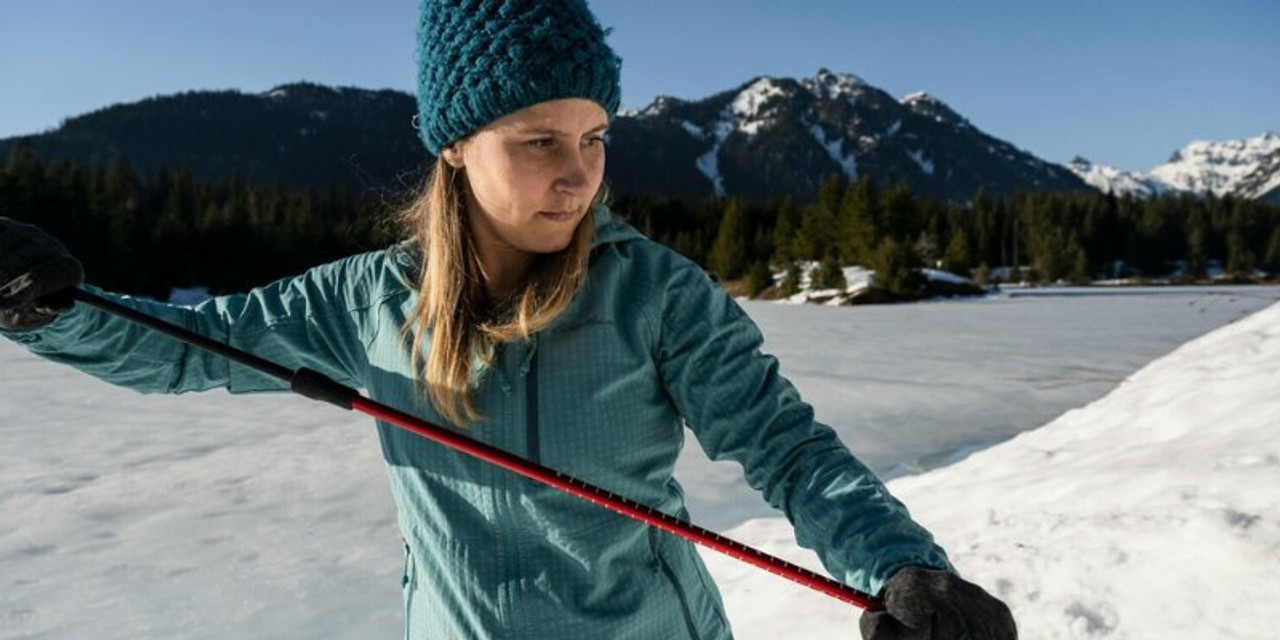Winter Snowshoeing Survival Tips
Posted by Crescent Moon on Oct 25th 2023
Snowshoeing in the winter landscape offers a magical experience, with pristine snow-covered trails and serene wilderness. However, venturing into snowy terrain also comes with its share of challenges and potential risks. To ensure a safe and enjoyable snowshoeing adventure, it's crucial to be prepared and informed about winter survival. In this guide, we'll explore essential winter snowshoeing survival tips to keep you safe while you explore the snowy wilderness.
Check Weather and Avalanche Conditions:
Before you hit the snowshoe trail, check the weather forecast for your destination. Be prepared for sudden weather changes, and pack appropriate clothing layers to stay warm and dry. Additionally, consult avalanche forecasts for the area and avoid high-risk zones if you're not trained in avalanche safety.
Tell Someone Your Plans Before You Snowshoe
Always let someone know your snowshoeing plans, including your expected route, estimated return time, and emergency contact information. In case of unforeseen circumstances, this information can be crucial for search and rescue teams. This is another rule that is good practice regardless of what you are doing in the outdoors. You can always hope for the best, but planning for the worst can save a life.
Carry Essential Snowshoe Gear
Snowshoers should carry essential gear, including a map and compass or GPS, a headlamp with extra batteries, a first aid kit, a multi-tool, a fire starter, an emergency blanket, and high-energy snacks. Additionally, consider carrying an avalanche probe, and shovel if you're snowshoeing in avalanche-prone areas.
Dressing in layers is vital to staying warm and dry. Start with moisture-wicking base layers, add insulation for warmth, and finish with a waterproof and windproof outer layer. Don't forget insulated boots, warm gloves, a hat, and moisture-wicking socks.
Know Basic Navigation Skills Before You Snowshoe
Familiarize yourself with basic navigation skills, such as map reading and compass use. GPS devices are valuable tools, but they can fail or lose battery power, so traditional navigation skills are essential.
Stay Together and Communicate:
If you're snowshoeing with a group, stick together and maintain clear communication. Discuss your plans, signals, and how to respond to emergencies before starting your adventure.
Understand Snowshoe Safety Basics
While most people who snowshoe are not out running multi day trips, you should also know that there are safety concerns for even the lightest days on the snow. Having a plan and knowing what can potentially happen can help you to prepare and remain safe on your snowshoe adventures.
Learn the signs and symptoms of frostbite and hypothermia, two common winter-related health concerns. Dress appropriately to prevent these conditions and know how to treat them if necessary.
Carrying some high-energy snacks like granola bars, trail mix, and dried fruit can help you to maintain your energy levels. Staying hydrated is also crucial, so pack water and a way to prevent it from freezing, such as an insulated water bottle or a thermos.
Watch for signs of fatigue, they can creep up on you while you snowshoe. Snowshoeing can be physically demanding, especially in deep snow or hilly terrain. Watch for signs of fatigue in yourself and your group members, and be prepared to turn back if necessary.
Be Prepared for Darkness prior to the sun actually setting. During the winter, daylight hours are shorter, and it's easy to get caught in the dark. Always carry a headlamp and a backup light source just in case, to ensure you can find your way back to safety if your adventure extends into the evening.
Learn Basic Snowshoeing Techniques
Familiarize yourself with basic snowshoeing techniques, including walking, traversing slopes, ascending and descending hills, and breaking trail. Practice these skills before tackling more challenging terrain.
Respect the environment and follow leave-no-trace principles to minimize your impact on the environment when you snowshoe (all the time really). Stay on designated trails and avoid trampling on vegetation. Respect wildlife and keep a safe distance.
When you are looking for places to snowshoe, you should ensure you are informed about local regulations. Some national parks and wilderness areas may have specific rules and regulations for winter activities like snowshoeing. Research and adhere to these guidelines to ensure you're in compliance.
Snowshoeing in winter can be a breathtaking and rewarding experience, but it's essential to prioritize safety. By following these winter snowshoeing survival tips, you'll be well-prepared to face the challenges of snowy terrain while enjoying the beauty of the winter wilderness. Remember that being informed, carrying the right gear, and practicing good judgment are key to a safe and enjoyable snowshoeing adventure. Stay safe and embrace the wonder of winter on your next snowshoeing expedition.


